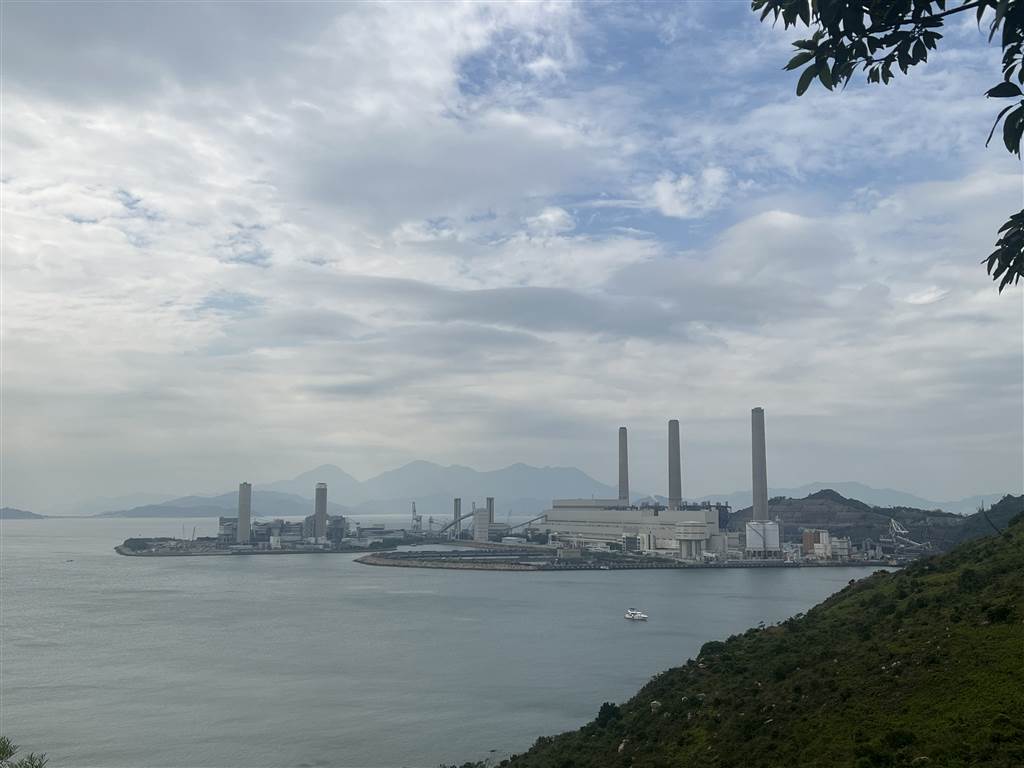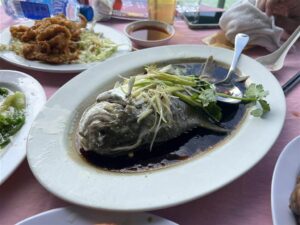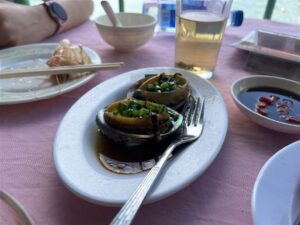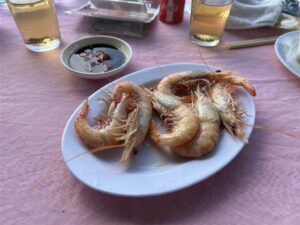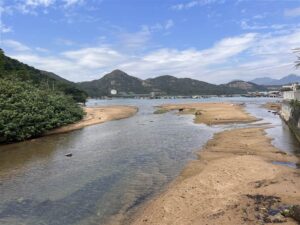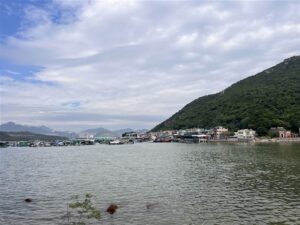A First Hike in Lamma Island from Sok Kwu Wan to Yung Shue Wan
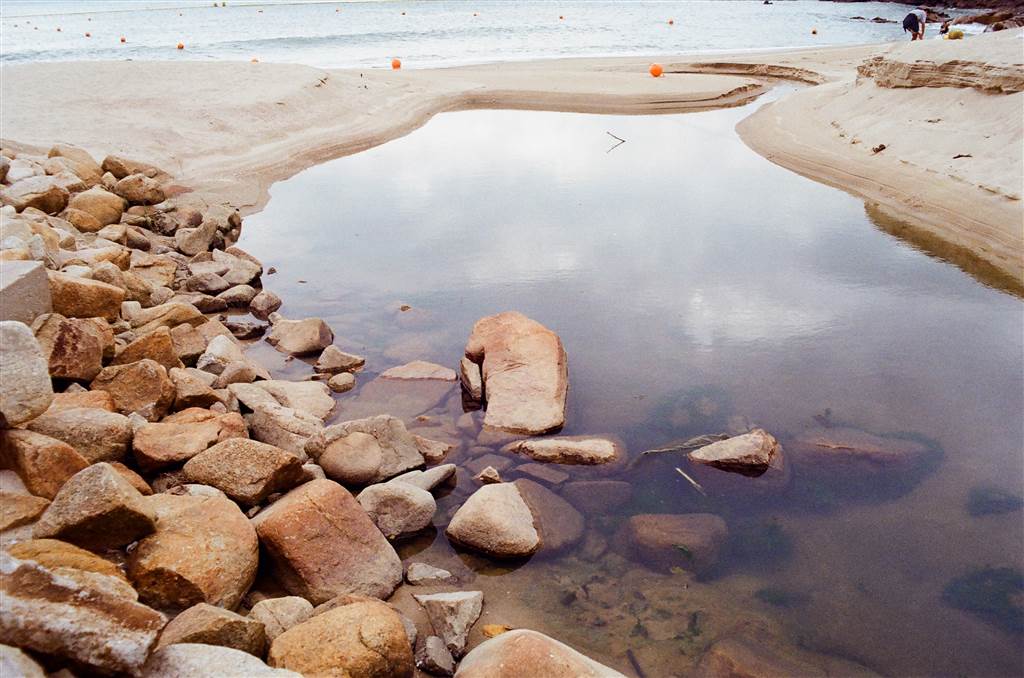
Hiking on a late autumn day in Hong Kong is exceedingly pleasant, and we had such a day in Lamma Island. It would be my first walk from Sok Kwu Wan to Yung Shue Wan, and it took less than two hours. We saw wonderful aerial views on the way.

Itinerary
We took the ferry to Sok Kwu Wan, which lies on the eastern side of Lamma Island. We first picked a restaurant to have a traditional seafood lunch. Peach Garden Seafood restaurant had a owner that was very kind and generous. Our lunch was less than $600 for three and it was good.
Then we began an easy hike to Yung Shue Wan. During this route, we passed by the Tin Hau Temple, the Kamakaze Grotto, and an abandoned building of Lo So Shing School of the Lo So Shing Village. Then we saw aerial views at the pavilion and stopped by the Hung Shing Yeh Beach. Finally we reached the very happening area of commercial activities and restaurants in Yung Shue Wan. We made a final stop at Corner 84 for coffee and egg tarts before departing at the Yung Shue Wan Ferry.
The Family Trail of Lamma Island
There are quite a few options in terms of proper hiking in Lamma Island. The walk between Sok Kwu Wan and Yung Shue Wan would be the very beginners’ level. The Yung Shue Wan section of the walk is on a family trail (that usually suggests an easy walk).

Departing from Sok Kwu Wan, head out on the opposite direction from the Sok Kwu Wan Pier. You will arrive at the Tin Hau Temple very soon.
The Tin Hau Temple in Sok Kwu Wan
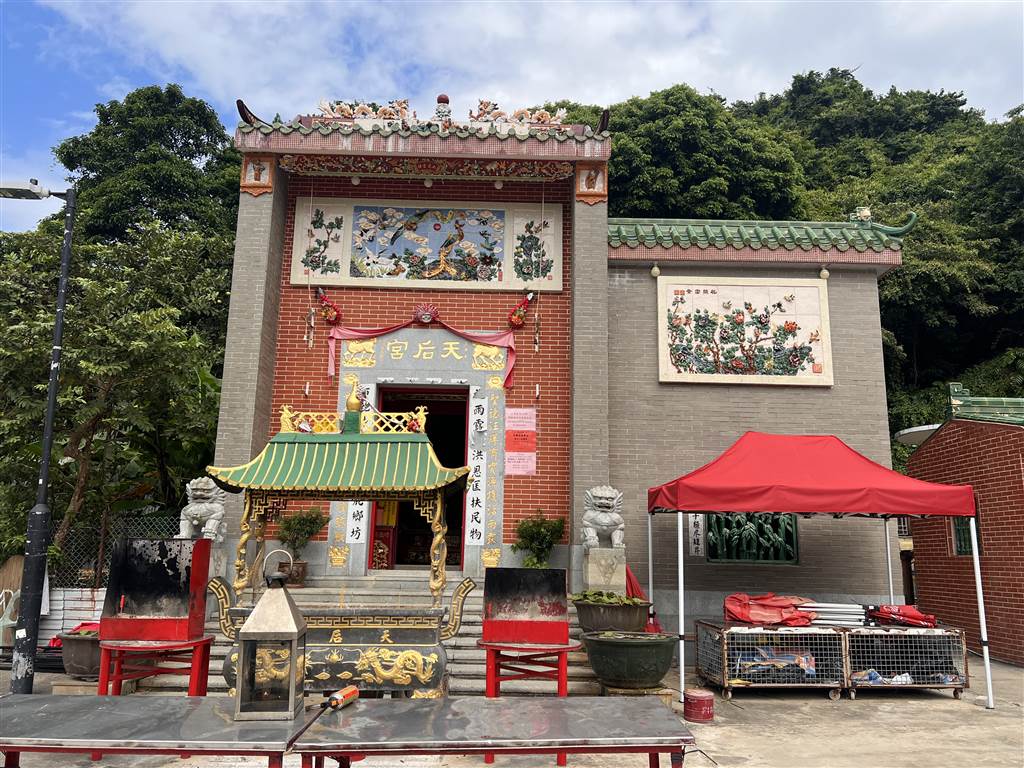
Tin Hau is traditionally viewed to be a goddess of the sea.
It is obvious to any passer-by that this Tin Hau Temple is a new structure. Due to a fire in 2004, the original temple was destroyed. Then the Lamma Island (South) Rural Committee gathered the donations to rebuild the temple.
In the temple, the incense burner was cast in the 6th year of the Daoguang reign (1826) of the Qing Dynasty. A bell was cast in the 21st year of the Guangxu reign (1895) of the Qing Dynasty. The plaque of the temple was dated the 8th year of the Daoguang reign (1828). This evidence suggests that the original Temple was constructed in the earlier parts of 19th century and possibly underwent restoration in 1895.
Keep on going along the coast, pass the estuary. Then keep on walking along the coast.
Soon, you will see the Kamikaze Grotto on your left.
The Kamikaze Grotto
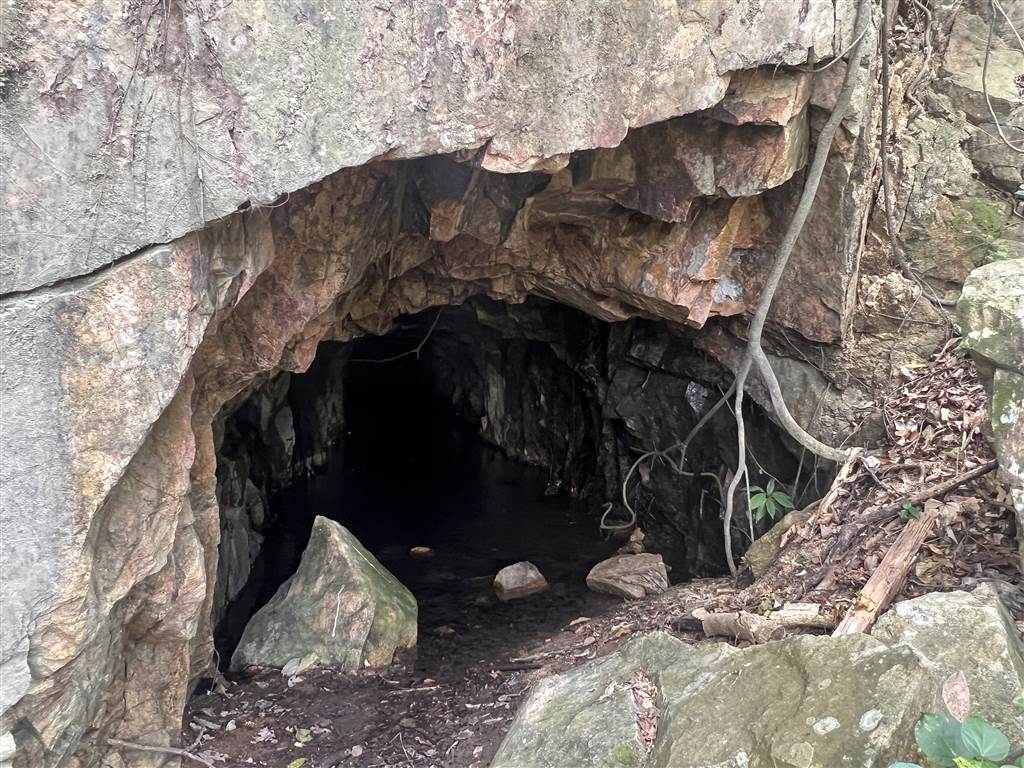
Pass the estuary, where the river meets the sea. Take on the path along the coast, and you will see the Kamikaze Grotto.
During WWII, the Japanese Imperial Army maintained “the Japanese Special Attack Units of military aviators who flew suicide attacks for the Empire of Japan against Allied naval vessels in the closing stages of the Pacific campaign of World War II.” (Wikipedia). Kamikaze, meaning “divine wind,” came to be associated with suicide missions of the Japanese military.
In Hong Kong, the Japanese took over the Lo So Shing Village area in Lamma Island to be its naval port. As such, thousands of Japanese soldiers stationed in this area of Lamma Island. They dug the caves (therefore these caves are not natural caves) and hid speedboats there. According to the Wikipedia, there used to be some 20 such caves in all of Lamma Island. Now only a few remains visible.
When you visit these caves you will see that they are located for this specific purpose. The caves lie right by the waterfront. They are not too big, about ten meters wide and several tens of meters deep.
The intention was for them to be able to quickly launch suicide speedboat missions if the Allies arrive in their naval fleets. A suicidal speedboat mission was envisioned to be like this: speedboats carrying a large amount of explosives in its front would be launched at high speed to crash into a naval ship passing by. The Japanese military believed that this would sustain the largest amount of damage against their enemies. According to the description on site, however, the war ended before this work was completed.
After the Pacific War, the British military in Hong Kong destroyed all the kamikaze speedboats in Lamma Island.
Having seen the Kamikaze Grotto, you will come upon this split road. Take the path to the left. You will continue onto the Lo So Shing Village and see the Lo So Shing School.
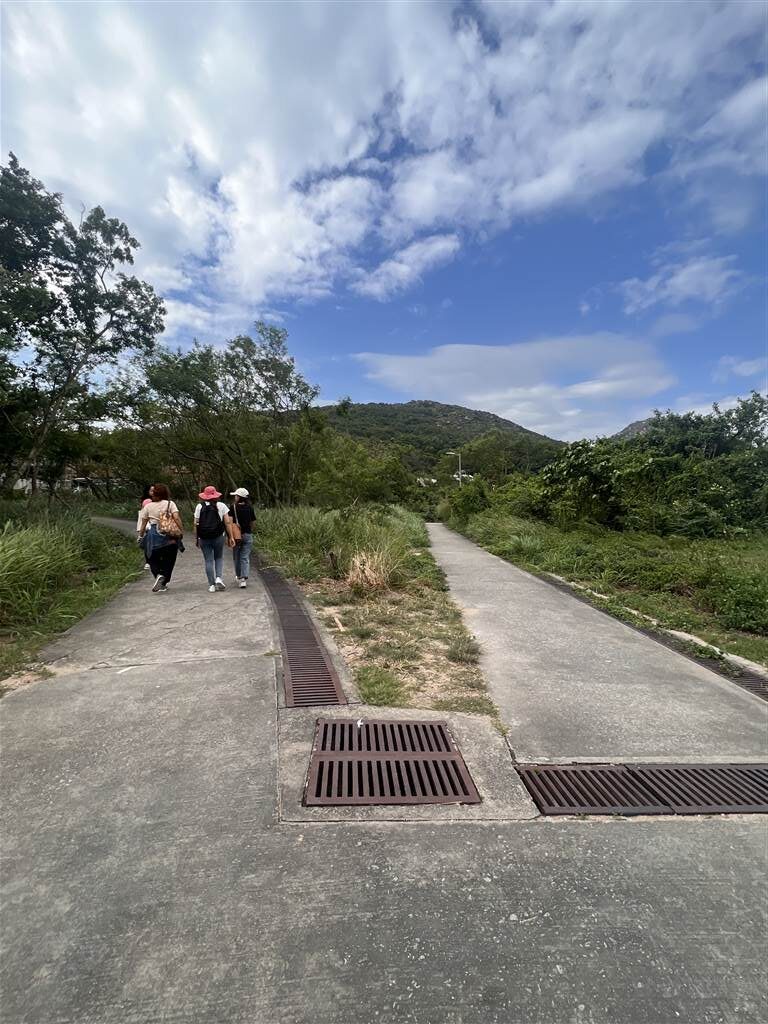
The Lo So Shing School
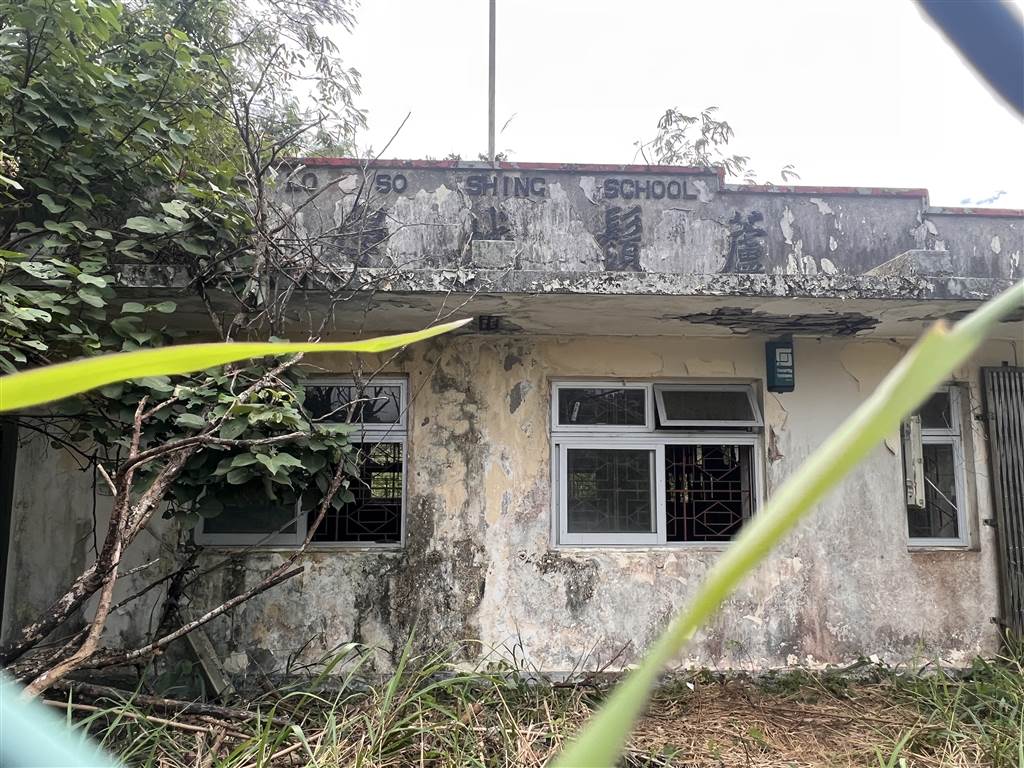
The Lo So Shing School was the only school on Lamma Island. Due to insufficient enrolment, it closed its doors in 2004. Lo So Shing Village itself had three hundred years of history. But as far as we could observe, few villagers live there now.
Having passed the Lo So Shing School, you will soon see these stairs. If you go up these stairs, you will find a public toilet. But you should head back on the path on the right to go on with the trail.
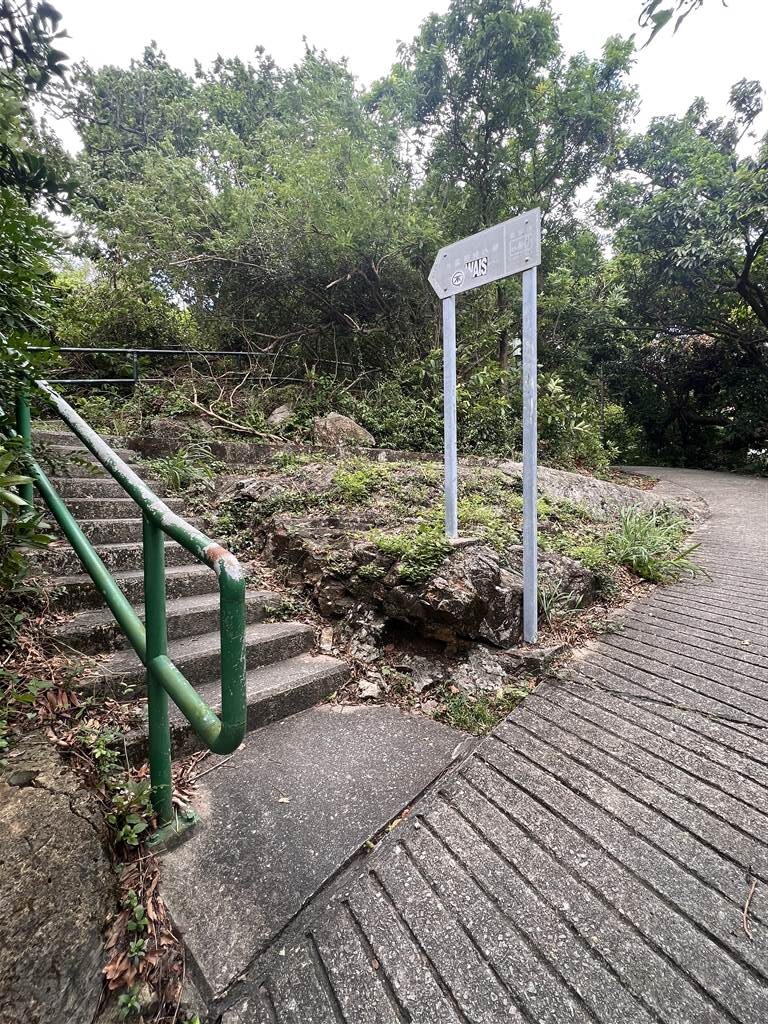
You will soon see Lo So Shing Village, and at this point with the tent, go on the way to your left. You will then head up the hills.
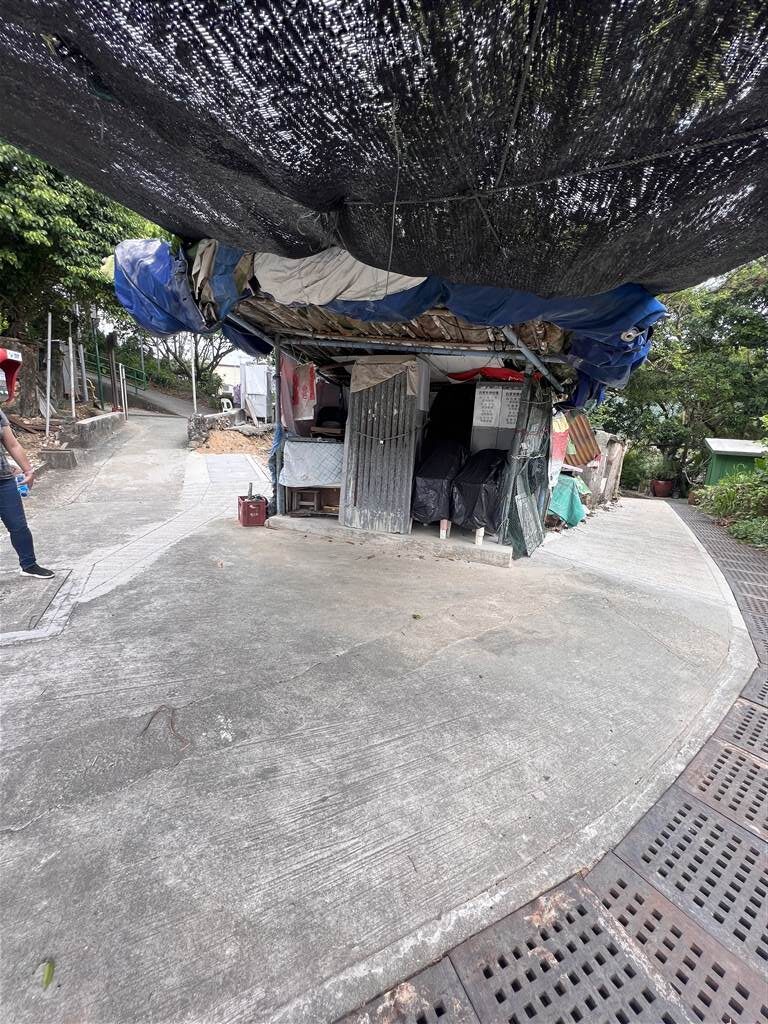
When you see the pavilion, be sure to take a look at the panoramic and aerial views of Lamma Island there. At this spot, you see the Sok Kwu Wan Pier.
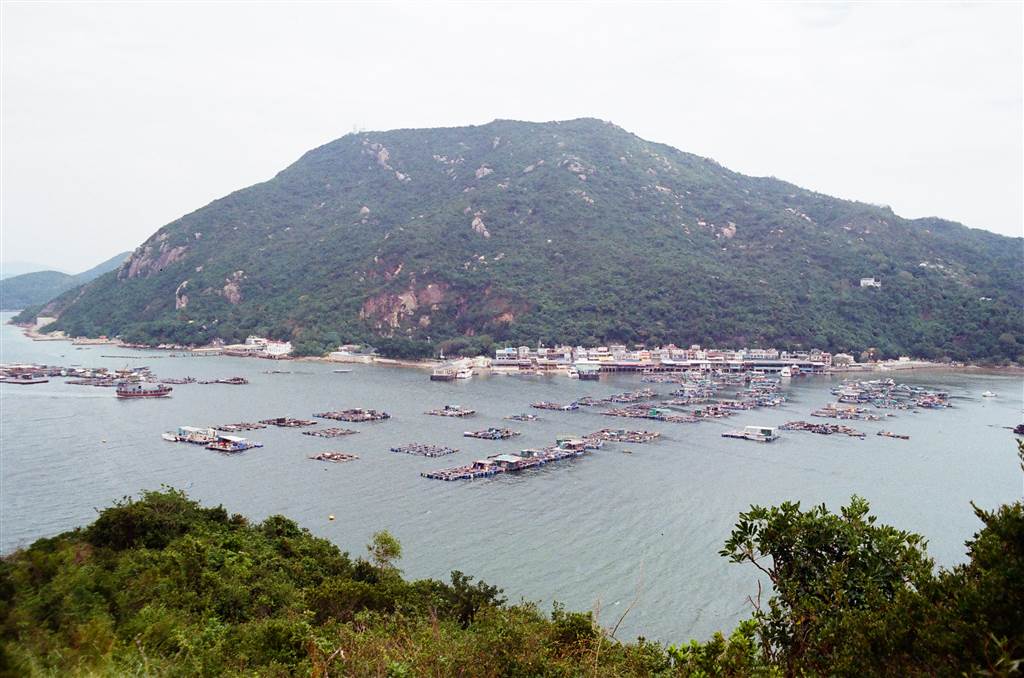
All throughout this way, you will see signs and follow the sign for Yung Shue Wan.
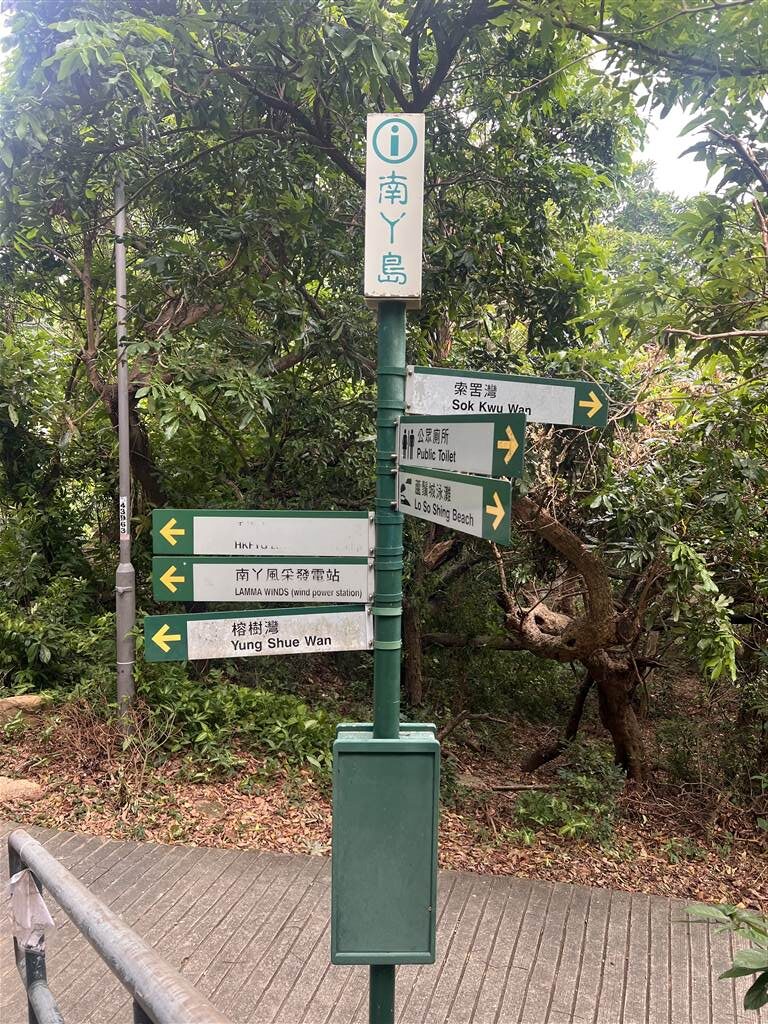
The Hung Shing Yeh Beach
There were actually quite a few beaches that we could see from the high points on the hill when we walked the family trail. There did not seem to be standard paths of access for most of them. But once you have descended from the hill on the family trail, you will arrive at the Hung Shing Ye Beach, which is a proper beach.

We were just about ten minutes away from Yung Shue Wan.

Finally, we stopped by Corner 84, a bakery with just one high table for seating. We had a drink there and Portuguese egg tarts that were surprisingly good.
How to Get There
The ferry to Lamma Island departs from Pier Four in the Central Pier. Please be very careful when boarding because the left side of the pier goes to Sok Kwu Wan and the right side of the pier goes to Yung Shue Wan. Ferries to Yung Shue Wan are more frequent. But in any case, you should check the ferry schedule and plan accordingly.
Sources
Descriptions on site in Lamma Island
The Wikipedia on Kamikaze.
The Wikipedia on Kamikaze Grotto (Chin).
Home Affairs Department, Hong Kong Fun in 18 Districts.
